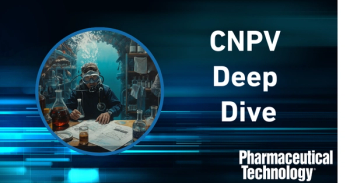
- Pharmaceutical Technology-10-02-2019
- Volume 43
- Issue 10
Image Repair Must Get to the Root Cause
Climbing out of a reputation hole starts with adopting a quality culture.
A recent Gallup poll concluded “Americans are more than twice as likely to rate the pharmaceutical industry negatively as positively.”
In an August 2019 Gallup assessment of perceptions of US business industry sectors, 1525 adults ranked pharma last among 25 industries; 58% of the respondents gave a negative rating and only 27% gave pharma a positive rating. This grading-pharma’s lowest net rating ever in nearly 20 years of the survey-ranks it behind often-criticized business segments such as airlines, banks, oil and gas, the legal field, healthcare, and advertising and public relations. Even the federal government was viewed more positively than drug manufacturers (1).
Other studies ranked pharma in a similarly negative light. In a 2018–2019 global study conducted by PatientView, only 41% of patients rated the pharma industry’s corporate reputation as “excellent” or “good,” down slightly from the previous study. Pricing appears to be a major factor in the perceptions that patients form about drug companies. Only 9% of the respondents rated pharma’s fair pricing policies as excellent or good (2).
When looking at individual companies, reputation does not fare much better. Only four pharma companies are listed in the top 100 of the Reputation Institute’s Global RepTrak 100, which was compiled from a survey of more than 165,000 individuals. Johnson & Johnson was the highest ranked pharma company, placing at number 82 (3).
While some executives may take the path of satisfying shareholders over patients, positive reputations can be crucial for securing investments and partnerships and sustaining innovation. Press releases, lobbying, or social responsibility mission statements can whitewash over some public perception problems. Resolving core issues-such as quality problems and drug shortages-requires investigations of the root cause of the problem and permanent fixes.
As confidence in drug companies falters, the industry also becomes less attractive to skilled researchers, who may turn to more respected fields of science and innovation. Patients who lose faith in pharma’s ability to provide quality medicines at affordable prices may look elsewhere, turning to online or overseas pharmacies that sell products of questionable quality.
Problems with mainstream, regulated drugs can also undermine patient trust in the pharma industry. Consider the recent discovery of nitrosamines in a third classification of drugs (4) and the suspected manipulation of product testing data used in the development of a gene therapy’s manufacturing process (5).
Drug development and manufacturing professionals do not have the authority to influence drug pricing or other business decisions. They can, however, make a difference in the quality of drugs produced.
A quality culture should be adopted throughout an organization, said Patrizia Cavazzoni, deputy director of operations at FDA’s Center for Drug Evaluation and Research, at the September 2019 PDA/FDA Joint Regulatory Conference. Executive management is ultimately responsible for assuring reliable manufacturing operations and high-quality standards, Cavazzoni said, noting that warning letters are directed to the top company executive to emphasis the importance of quality throughout the organization (6).
Organizations should design quality into all systems, invest in manufacturing technologies, guard against decay in operational effectiveness, and ensure suppliers are aligned with your quality practices, she recommended.
References
1. J. McCarthy, “Big Pharma Sinks to the Bottom of US Industry Rankings,” www.Gallup.com, Sept. 3, 2019.
2. PatientView, “Corporate Reputation of Pharma in 2018-the Patient Perspective,” Press Release, April 18, 2019.
3. Reputation Institute,
4. FDA, “Statement Alerting Patients and Health Care Professionals of NDMA Found in Samples of Ranitidine,” Press Statement, www.fda.gov, Sept. 13, 2019.
5. FDA, “Statement on Data Accuracy Issues with Recently Approved Gene Therapy,” Press Statement, www.fda.gov, Aug. 6, 2019.
6. P. Cavazzoni, “Advancing Drug Innovation Through Investment in Quality,” Presentation at the 2019 PDA/FDA Joint Regulatory Conference (Washington, DC, Sept. 16, 2019).
Article Details
Pharmaceutical Technology
Vol. 43, No. 10
October 2019
Page: 10
Citation
When referring to this article, please cite it as R. Peters, “Image Repair Must Get to the Root Cause," Pharmaceutical Technology 43 (10) 2019.
Articles in this issue
about 6 years ago
FT-IR Spectrometerabout 6 years ago
Nexera Prep Seriesabout 6 years ago
Pharmaceutical Cleanroom Monitoringabout 6 years ago
Multi-Shaft Mixers for High-Quality Gels and Creamsabout 6 years ago
Stability Testing for Small-Molecule Clinical Trial Materialsabout 6 years ago
The Never-Ending Brexit?about 6 years ago
Out with the Old and In with the New European Commissionabout 6 years ago
Data Integrity Violations Draw Strong FDA Rebukesabout 6 years ago
The Fundamentals of Dissolution Testingabout 6 years ago
Overcoming Bioavailability ‘Roadblocks’ with LBDDSNewsletter
Get the essential updates shaping the future of pharma manufacturing and compliance—subscribe today to Pharmaceutical Technology and never miss a breakthrough.




